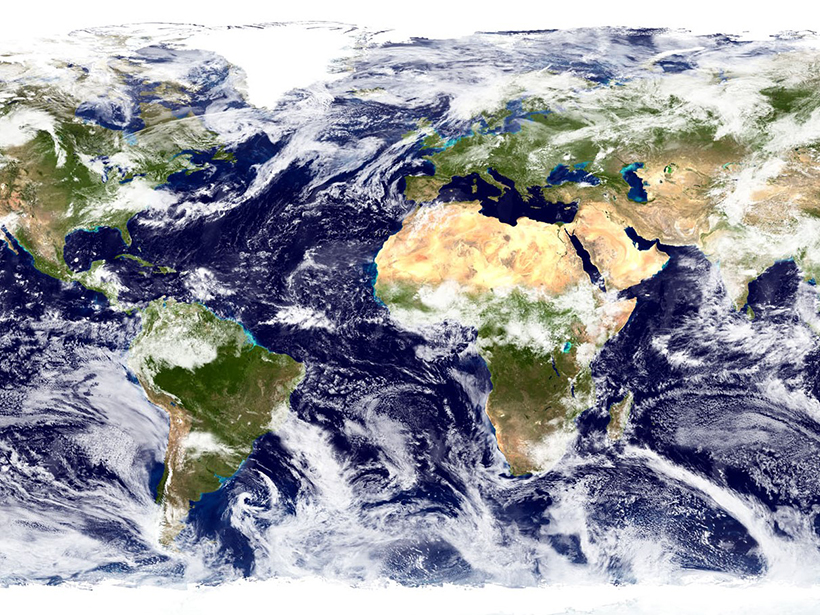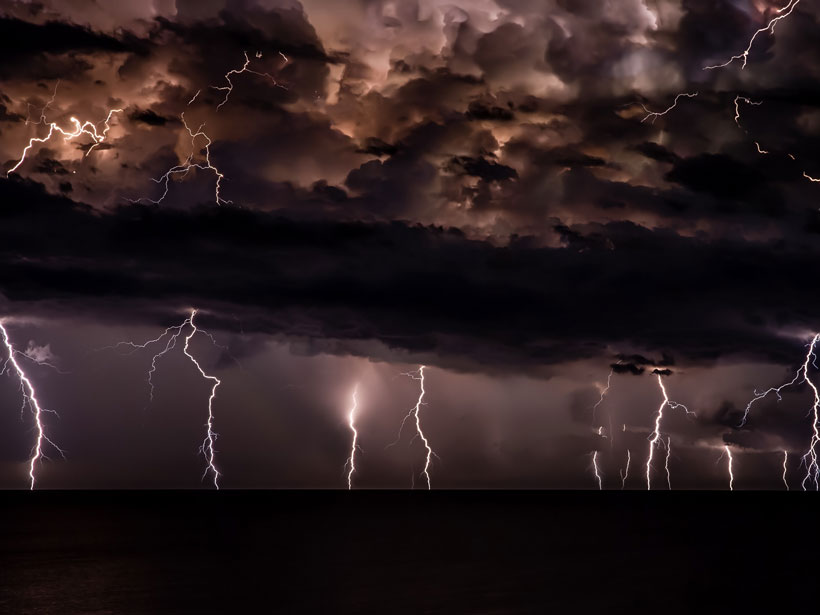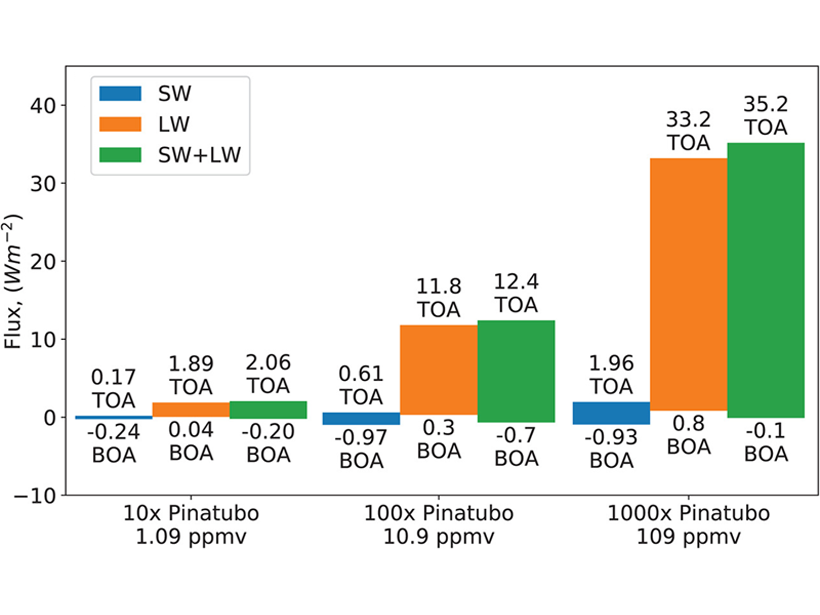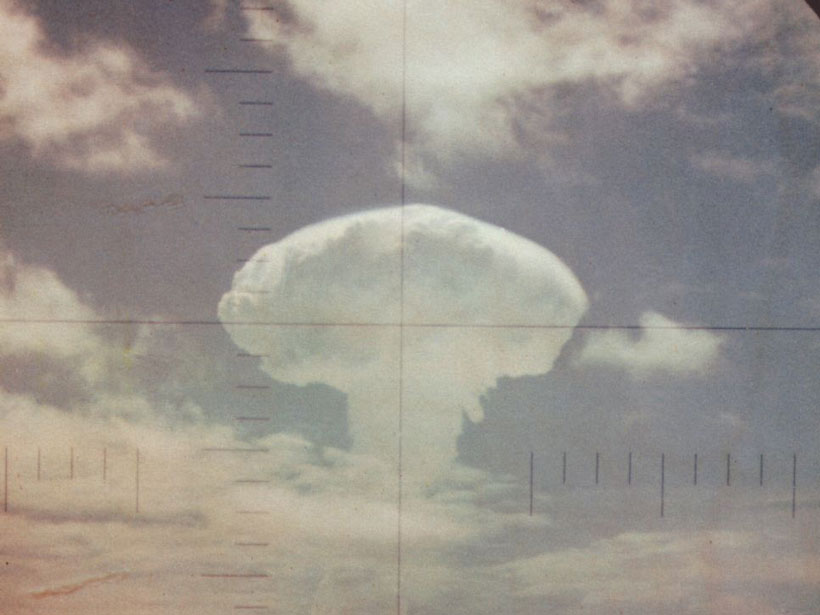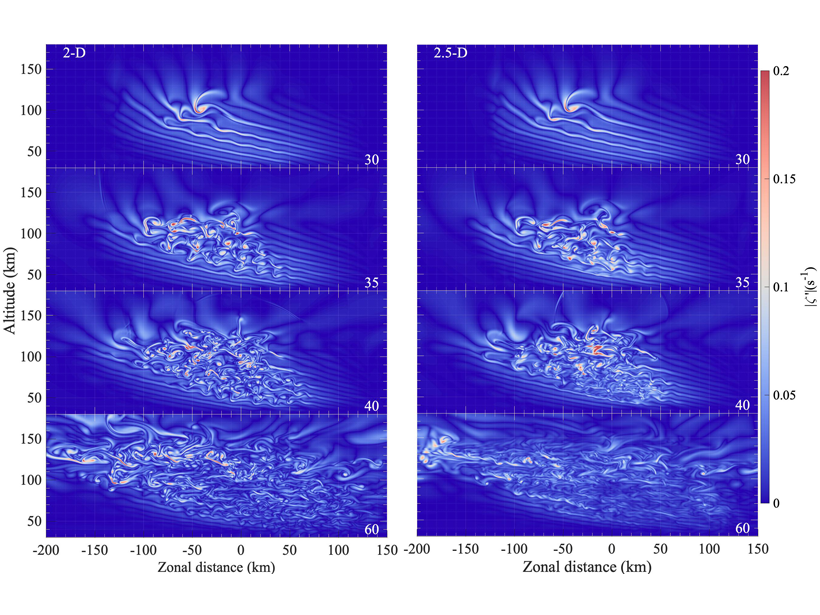Compared with previous generations, current Earth system models predict that Earth’s climate is more sensitive to carbon dioxide. Where does the increased sensitivity come from?
everything atmospheric
Goldstein Receives 2019 Yoram J. Kaufman Outstanding Research and Unselfish Cooperation Award
Allen H. Goldstein received the Yoram J. Kaufman Outstanding Research and Unselfish Cooperation Award at AGU’s Fall Meeting 2019, held 9–13 December in San Francisco, Calif. The award recognizes “broad influence in atmospheric science through exceptional creativity, inspiration of younger scientists, mentoring, international collaborations, and unselfish cooperation in research.”
Mapping Lightning Strikes from Space
A new technique spatially tracks lightning in real time and has been adapted by the National Weather Service.
Earth’s Skies Transmitted Signs of Life During Lunar Eclipse
Using upcoming ground- and space-based telescopes, scientists hope to make similar observations of the skies of distant, Earth-like exoplanets.
The Overlooked Role of Sulfur Dioxide Emissions from Volcanoes
Volcanoes can warm as much as they cool. Prior simulations have neglected the important warming effects of sulfur dioxide emissions, making some results colder than they should be.
Intensified Investigations of East Asian Aerosols and Climate
Three special collections in JGR: Atmospheres present a fast-growing body of literature on atmospheric aerosols and their impact on the regional climate in East Asia.
Nuclear War Would Spawn a “Nuclear” El Niño
A jolt to the climate system provided by nuclear war could spur an El Niño like we’ve never seen before.
Hot White Dwarfs May Reveal Cold Gas Giants
The gaseous atmospheres of giant planets may evaporate and accrete onto the dense surfaces of white dwarfs, providing astronomers a new way to detect hidden exoplanets.
Novel Simulations of Upper Atmosphere Gravity Wave Dynamics
Gravity waves play a key role in driving upper atmosphere circulations but are poorly understood. New high-resolution simulations are resolving complex wave behaviors with unprecedented detail.
Edmond Dewan, Citizen Science, and the Mystery of Ball Lightning
In the early 1960s, a physicist enlisted the help of the public to study a rare atmospheric phenomenon.

